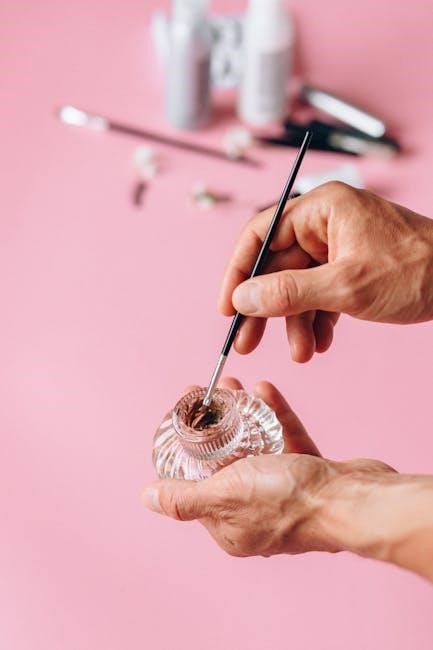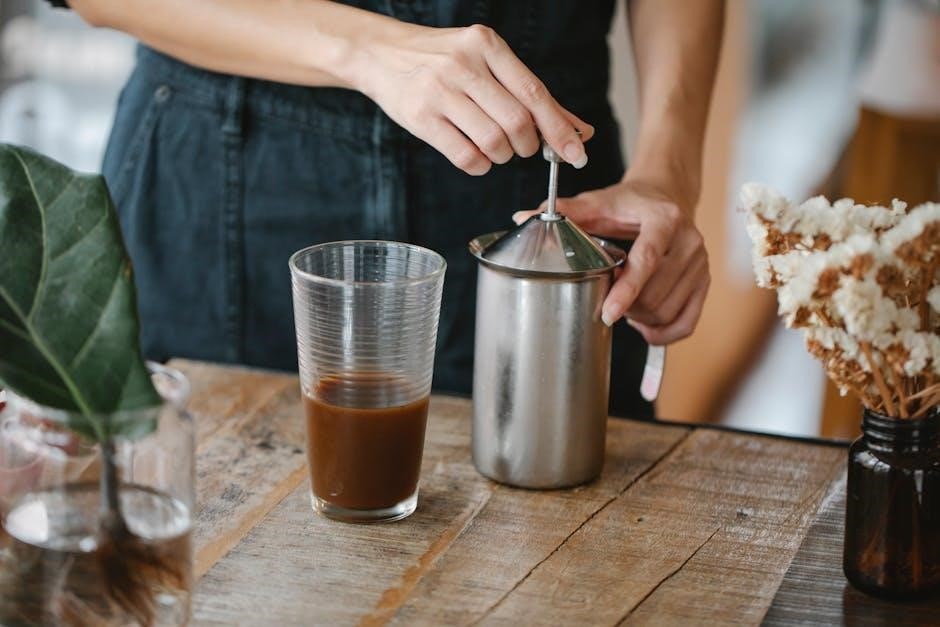Ortho-Glass Splinting: A Comprehensive Guide
This comprehensive guide details Ortho-Glass splinting techniques‚ offering insights from material properties to post-application care. Learn about water activation‚ securing the splint‚ and comparing Ortho-Glass to other splinting options. The guide provides safety precautions and demonstrates optimal utilization to enhance patient care and outcomes.

Ortho-Glass splinting is a versatile and efficient method for immobilizing fractures‚ sprains‚ and strains‚ widely used in emergency medicine and orthopedic settings. This system offers a fast‚ secure‚ and easy splinting solution‚ combining the benefits of fiberglass casting with the convenience of pre-padded materials. Its quick-setting time and conformability make it suitable for various applications‚ providing effective support and stabilization to injured limbs.
The Ortho-Glass system distinguishes itself through its ease of use‚ cost-effectiveness‚ and versatility across different phases of immobilization. Unlike traditional plaster casts‚ Ortho-Glass is lightweight‚ breathable‚ and allows for better patient comfort. It requires minimal water activation‚ reducing mess and preparation time‚ streamlining the splinting process for healthcare providers. This introduction sets the stage for a deeper exploration of Ortho-Glass splinting techniques‚ materials‚ and best practices‚ ensuring practitioners can confidently apply this valuable tool in their clinical practice.
Moreover‚ Ortho-Glass facilitates early functional rehabilitation due to its semi-rigid nature‚ enabling controlled movement and reducing the risk of joint stiffness. This makes it an excellent choice for both acute injuries and post-operative management‚ promoting faster healing and improved patient outcomes.
Goals of Splinting with Ortho-Glass
The primary goal of splinting with Ortho-Glass is to provide immediate immobilization and support to injured extremities‚ promoting healing and minimizing further damage. This involves reducing pain by stabilizing fractures‚ dislocations‚ and severe sprains‚ thereby preventing movement that could exacerbate the injury. Effective splinting aims to maintain proper anatomical alignment‚ ensuring that the injured bone or joint heals correctly and restores optimal function.

Another crucial objective is to protect the injured area from external forces and accidental impacts‚ shielding it during the healing process. Ortho-Glass splints are designed to be lightweight and comfortable‚ enhancing patient compliance and allowing for early mobilization when appropriate. They also play a vital role in reducing swelling and inflammation by providing consistent compression and support to the affected area. Furthermore‚ splinting can help prevent complications such as non-union‚ malunion‚ and chronic instability.
Ultimately‚ the goal is to facilitate a faster and more complete recovery‚ enabling patients to return to their normal activities as quickly and safely as possible. Ortho-Glass aids in wound management by allowing for easy removal and reapplication for wound inspection and care when necessary.
Materials and Preparation for Ortho-Glass Application
Successful Ortho-Glass application requires careful preparation and the right materials. Essential supplies include Ortho-Glass splinting rolls or pre-cut strips of appropriate size for the injury. Stockinette should be available to provide a comfortable‚ protective layer against the skin‚ extending beyond the splint’s edges. Padding‚ such as cast padding or Webril‚ is crucial to protect bony prominences and prevent pressure sores‚ with extra layers applied over vulnerable areas.
A clean basin with cool water is needed for activating the Ortho-Glass‚ along with trauma shears for cutting the splinting material and padding. Elastic bandages are necessary to secure the splint in place‚ providing compression and support. Additional items may include gloves for hygiene‚ skin preparation wipes‚ and measuring tools to ensure accurate splint length and width. Before application‚ assess the injury and ensure proper anatomical alignment.
Measure the dry splint on the contralateral extremity to determine the correct length. Apply the stockinette‚ extending it beyond the splinting material area. Prepare 2-3 layers of padding‚ lightly moistening if necessary. Organize all materials within easy reach to ensure a smooth and efficient splinting process.
Step-by-Step Ortho-Glass Splinting Techniques
Effective Ortho-Glass splinting necessitates meticulous adherence to procedural steps. Begin by assessing the injury‚ ensuring proper anatomical alignment before applying padding. The padding layer protects bony prominences‚ preventing pressure sores. Apply a stockinette extending it beyond the splints edges for secure adherence;
Measure the dry splint on the contralateral extremity to determine the correct length and width‚ ensuring it slightly exceeds the limb’s diameter. Immerse the Ortho-Glass in cool water briefly‚ then remove and roll it in a towel to eliminate excess water. The splint should feel almost dry to the touch when applying to the patient. Immediately apply the splint‚ smoothing out any wrinkles with your palm‚ leaving fingertips exposed to monitor circulation.
Secure the splint with an elastic bandage‚ applying slight tension. Keep the patient still until the splint has dried and hardened‚ which typically takes 5-8 minutes for fast-drying and 2-4 minutes for extra-fast drying. After drying‚ check the splinted extremity for function‚ arterial pulse‚ capillary refill‚ skin temperature‚ and sensation. Proper technique ensures effective immobilization and patient comfort.
Specific Splinting Techniques Using Ortho-Glass
Ortho-Glass offers versatility across various splinting needs. For wrist injuries‚ a volar splint provides support while allowing finger movement. Extend it from the distal palmar crease to just below the elbow‚ ensuring proper padding. A sugar tong splint‚ shaped like a candy wrapper‚ encircles the elbow or ankle‚ offering greater stability for fractures or dislocations. Apply it with ample padding to prevent pressure points.
For lower leg injuries‚ a posterior ankle splint immobilizes the ankle and foot. Extend it from the metatarsal heads to the popliteal fossa‚ molding it carefully around the heel. Thumb spica splints are ideal for thumb injuries‚ extending from the forearm to beyond the thumb’s tip‚ securing the interphalangeal joint. U-slabs provide additional support for fractures requiring circumferential immobilization. These techniques‚ when performed correctly‚ ensure optimal stability and promote healing.
Remember to monitor circulation and nerve function post-application. Adjustments may be needed to ensure patient comfort and prevent complications. Each technique should be tailored to the specific injury and patient anatomy for best results. Consider consulting with a specialist for complex cases.
Padding Application for Ortho-Glass Splints
Proper padding is crucial when applying Ortho-Glass splints to protect the patient’s skin and prevent pressure sores. Begin by applying a stockinette that extends beyond the intended splint edges. This creates a smooth‚ comfortable base layer. Next‚ apply two to three layers of padding‚ overlapping each layer by approximately 50% to ensure consistent coverage. Pay close attention to bony prominences such as the ulnar styloid‚ malleoli‚ and tibial crest.
Add extra padding‚ typically two to three additional layers‚ over these areas to provide enhanced protection. Lightly moisten the padding before applying the Ortho-Glass to help it conform to the patient’s anatomy. Ensure the padding is smooth and wrinkle-free to avoid creating pressure points. When splinting digits‚ place padding between each finger or toe to prevent maceration and maintain separation.
Secure the padding with a light wrap to keep it in place during splint application. Remember‚ adequate padding is essential for patient comfort and to minimize the risk of skin breakdown under the splint. Regularly assess the skin around the splint edges for any signs of irritation or pressure. Adjust padding as needed.
Securing and Bandaging the Ortho-Glass Splint
Once the Ortho-Glass splint is properly molded and applied‚ securing it effectively is crucial for immobilization and patient comfort. Begin by using an elastic bandage to wrap the splint‚ starting distally and moving proximally. Apply the bandage with slight tension‚ ensuring it is snug but not too tight‚ to avoid compromising circulation. Overlap each layer of the bandage by approximately 50% to provide uniform pressure and support.
Pay close attention to bony prominences and areas where the splint edges may cause pressure. Use extra padding or bandage layers in these regions to enhance comfort and prevent skin irritation. Ensure that the bandage extends beyond the splint edges to prevent them from digging into the skin. Monitor the patient’s circulation‚ sensation‚ and motor function regularly after applying the bandage.
Leave fingertips or toes exposed to allow for easy assessment of distal perfusion. Instruct the patient to report any signs of numbness‚ tingling‚ increased pain‚ or swelling immediately. Adjust the bandage as needed to maintain proper immobilization without restricting blood flow. Secure the end of the elastic bandage with clips or tape‚ ensuring it is firmly in place to prevent unraveling. Proper securing and bandaging are essential for the effectiveness and safety of the Ortho-Glass splint.
Post-Application Care and Monitoring
Following Ortho-Glass splint application‚ meticulous post-application care and monitoring are paramount to ensure optimal healing and prevent complications. Instruct the patient on proper splint care‚ emphasizing the importance of keeping the splint clean and dry. Advise against submerging the splint in water‚ as this can compromise its integrity and lead to skin maceration. Provide guidance on bathing and showering‚ suggesting methods to protect the splint from moisture.
Educate the patient about potential warning signs‚ such as increased pain‚ swelling‚ numbness‚ tingling‚ skin discoloration‚ or foul odor emanating from the splint. Instruct them to seek immediate medical attention if any of these symptoms arise. Schedule follow-up appointments to assess the splint’s fit‚ monitor the healing process‚ and address any concerns. At each visit‚ evaluate the patient’s neurovascular status‚ including circulation‚ sensation‚ and motor function.
Adjust the splint or bandage as needed to maintain proper immobilization without compromising blood flow. Reinforce the importance of adhering to activity restrictions and weight-bearing limitations. Provide guidance on pain management strategies‚ including elevation‚ ice application‚ and appropriate analgesics. Document all post-application care instructions and monitoring findings in the patient’s medical record. Consistent and thorough post-application care and monitoring are crucial for successful outcomes with Ortho-Glass splinting.
Ortho-Glass vs. Other Splinting Materials
When selecting a splinting material‚ understanding the distinctions between Ortho-Glass and alternatives is crucial. Ortho-Glass‚ a pre-padded fiberglass material‚ offers a convenient and relatively quick application process. Unlike traditional plaster splints‚ Ortho-Glass is lighter‚ more durable‚ and less messy. It also sets faster‚ reducing the overall immobilization time. However‚ plaster is often more moldable for complex anatomical contours and can be more cost-effective for large-scale applications.
Compared to synthetic options like fiberglass casting tape‚ Ortho-Glass offers a balance of rigidity and conformability. Fiberglass tape requires layering and can be more challenging to apply smoothly‚ potentially leading to pressure points. Prefabricated splints‚ such as those made of malleable aluminum or air-filled supports‚ offer simplicity for certain injuries but might lack the robust immobilization of Ortho-Glass for fractures or significant sprains.
Thermo plastic splints offer customizability but require specialized equipment and expertise. Velcro-type splints provide easy removability for wound care but might not offer sufficient support for unstable injuries. The choice ultimately depends on the injury’s nature‚ the patient’s needs‚ the clinician’s experience‚ and cost considerations. Ortho-Glass shines in situations demanding rapid‚ reliable immobilization with a blend of convenience and structural integrity.

Troubleshooting Common Issues with Ortho-Glass Splints

Despite its ease of use‚ Ortho-Glass splinting can present challenges. One common issue is improper molding‚ leading to inadequate support or pressure points; Ensure meticulous smoothing during application to prevent wrinkles and conform the splint to the limb’s contours. Insufficient padding can cause skin irritation or pressure sores‚ particularly over bony prominences. Always apply adequate padding‚ especially around vulnerable areas.
Premature hardening can occur if the Ortho-Glass is exposed to excessive moisture or warm water. Use cool water and remove excess moisture before application. If the splint sets too quickly‚ it may be difficult to mold properly. Conversely‚ delayed hardening may result from insufficient water or cold temperatures.
Patient discomfort can arise from a splint that is too tight or too loose. Monitor circulation and sensation regularly. If signs of compartment syndrome develop‚ the splint must be bivalved or removed immediately. Splint breakdown or cracking can occur with excessive stress or improper handling. Reinforce weakened areas with additional layers or replace the splint if necessary.
Finally‚ educate patients on proper splint care to prevent damage and ensure optimal healing. Addressing these issues promptly and effectively ensures successful Ortho-Glass splinting and improved patient outcomes.